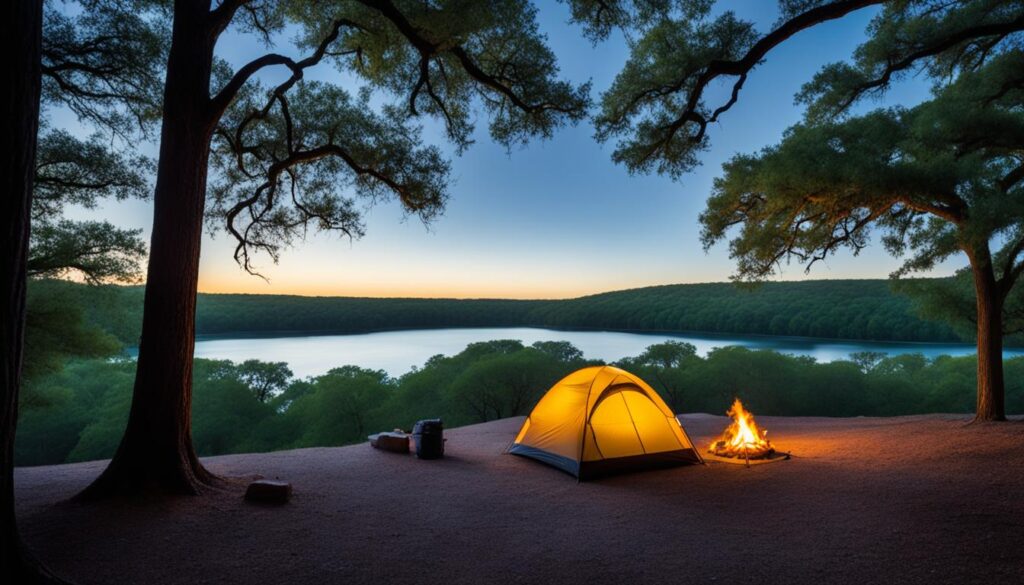Here are some camping statistics that I found in the search results:
- Over 50 million Americans above the age of six years old went camping in 2020 and 2021.
- Camping incidence has grown significantly over the past decade and now anchors about one-third (32%) of the leisure travel market.
- With campers spending over $52 billion in local communities last year, outdoor hospitality and camping are a formidable part of leisure travel.
- Millennials and Gen Z represented 48% of campers in 2020, a figure that has grown every year since 2015.
- The most popular camping activities include hiking, fishing, swimming, and wildlife viewing.
- The most popular camping destinations in the United States include national parks, state parks, and private campgrounds.
- The most popular national parks for car and RV camping include Great Smoky Mountains National Park, Yosemite National Park, Grand Canyon National Park, and Rocky Mountain National Park.
- The most popular state parks for camping include California State Parks, Florida State Parks, and Texas State Parks.
- The most popular private campgrounds include KOA, Thousand Trails, and Sun RV Resorts.
- The average camping trip lasts 2.6 days.
- The average camping party size is 3.3 people.
- The average camping expenditure per trip is $167.
- The most popular camping equipment includes tents, sleeping bags, coolers, and camp chairs.
- The most common reasons for camping include spending time with family and friends, enjoying nature, and escaping the stress of daily life.
- The COVID-19 pandemic has led to an increase in camping, as people seek outdoor activities that allow for social distancing.
Sources:
- https://www.statista.com/statistics/191224/participants-in-camping-in-the-us-since-2006/
- https://koa.com/north-american-camping-report/
- https://www.roamly.com/learning-center/national-parks-that-attract-most-car-and-rv-campers
- https://www.nps.gov/subjects/socialscience/visitor-use-statistics.htm
- https://www.nps.gov/aboutus/visitation-numbers.htm
More Camping Facts
Here are 20 additional camping statistics:
- In 2021, over 50 million Americans above the age of six years old went camping.
- The number of campers has grown significantly over the past decade, with camping now anchoring about one-third (32%) of the leisure travel market.
- Millennials and Gen Z represented 48% of campers in 2020, a figure that has grown every year since 2015.
- The most popular camping activities include hiking, fishing, swimming, and wildlife viewing.
- The most popular camping destinations in the United States include national parks, state parks, and private campgrounds.
- The most popular national parks for car and RV camping include Great Smoky Mountains National Park, Yosemite National Park, Grand Canyon National Park, and Rocky Mountain National Park.
- The most popular state parks for camping include California State Parks, Florida State Parks, and Texas State Parks.
- The most popular private campgrounds include KOA, Thousand Trails, and Sun RV Resorts.
- The average camping trip lasts 2.6 days.
- The average camping party size is 3.3 people.
- The average camping expenditure per trip is $167.
- The most common reasons for camping include spending time with family and friends, enjoying nature, and escaping the stress of daily life.
- The COVID-19 pandemic has led to an increase in camping, as people seek outdoor activities that allow for social distancing.
- The National Park Service received 312 million recreation visits in 2022, up 15 million visits (5%) from 2021.
- In 2022, there were 1,358,946,990 recreation visitor hours.
- In 2022, there were 8,039,768 overnight stays in the National Park System.
- Three parks had 10 million or more recreation visits, 9 parks had 5 million or more recreation visits, and 75 parks had 1 million or more recreation visits.
- The most popular camping equipment includes tents, sleeping bags, coolers, and camp chairs.
- The most common camping equipment purchases include tents, sleeping bags, and camp chairs.
- The most popular camping equipment brands include Coleman, REI, and The North Face.
Sources:
- https://www.nps.gov/subjects/socialscience/annual-visitation-highlights.htm
- https://www.statista.com/statistics/191224/participants-in-camping-in-the-us-since-2006/
Camping Demographics
Here are some camping demographics statistics:
- In 2018, families choosing to camp grew by 1.4 million, reaching an overall all-time high of 78.8 million households.
- Over 50 million Americans above the age of six years old went camping in 2020 and 2021, representing a high increase versus previous years.
- 65% of campers stay in campsites, with 56% being Millennials, and 60% camping in tents, making it the most popular way to camp.
- Millennials accounted for 40% of campers in North America in 2021, making them the generation with the highest share of campers.
- In 2022, the majority of campers in North America, 61%, were White, while only seven percent were Asian.
- Since 2015, camping in national parks and state parks has declined. However, in 2018, in national parks and state parks amongst African American/Black and Asian, it is at an all-time high.
- Post-pandemic, 45% of Millennials and 44% of Gen Z have the highest level of interest in camping, and camping is likely to account for 16% of all trips taken.
- Revenue in the camping industry is projected to reach US $43.89 billion in 2023, with an expected annual growth rate resulting in a projected market volume of US $62.23 billion by 2027.
- 60% of nights are spent in public campgrounds or public land.
- 40% of households say that the campsite’s quality has the most impact on their selection, specifically older campers.
These statistics provide insights into the growing popularity of camping, the demographic groups that are most engaged in camping, and the changing trends in camping preferences.
Sources:
- https://www.condorferries.co.uk/camping-statistics
- https://www.statista.com/statistics/191224/participants-in-camping-in-the-us-since-2006/
- https://gitnux.org/camping-industry-statistics/
- https://www.statista.com/topics/1319/camping-and-recreational-vehicles/
- https://www.statista.com/statistics/415948/ethnic-distribution-of-campers-north-america/
Economic Impacts of Camping
Here are some economic impact statistics related to camping:
- Camping generates $274 million in benefits for the county annually.
- In 2018, camping created 1.4 million jobs in the United States.
- Camping creates an estimated market volume of $24.88 billion in the United States by 2028, with a growth rate of 1.69% (2024-2028).
- Camping accounts for 11% of all trips for Americans, and post-COVID-19, it is likely to account for 16% of all trips taken.
- Revenue in the camping industry is projected to reach $43.89 billion in 2023, with an expected annual growth rate resulting in a projected market volume of $62.23 billion by 2027.
- Camping generates revenue in the following sectors: restaurants ($1.2 million), groceries ($828,400), retail outlets ($426,700), recreational activities ($427,300), and transportation ($271,400).
- Camping trips create 31 jobs in the area, with an average salary of $31,100 per year.
- Camping trips generate $52 billion in local communities.
- Camping incidence has grown significantly over the past decade and now anchors about one-third (32%) of the leisure travel market.
These statistics demonstrate the significant economic impact of camping on local communities, job creation, and the overall travel industry. Camping is not only a popular recreational activity but also a valuable contributor to the economy.
Sources:
- https://www.rv.com/lifestyle-travel/new-report-shows-impact-of-campers-on-local-economies/
- https://www.condorferries.co.uk/camping-statistics
- https://amateuradventurejournal.com/camping-industry-statistics-2022/
- https://www.statista.com/outlook/mmo/travel-tourism/camping/united-states
- https://koa.com/north-american-camping-report/
Statistics on Types of Camping
The types of camping statistics indicate that camping is a diverse and popular activity, catering to a wide range of preferences. Here are some key statistics:
- 29% of RV owners are couples with children.
- 60% of campers prefer tents as their primary type of accommodation.
- 65% of campers stay in campsites, with 56% being Millennials, and 60% camping in tents, making it the most popular way to camp.
- 37% of campers participate in hiking or backpacking while camping and 36% participate in fishing.
- Camping incidence has grown significantly over the past decade and now anchors about one-third (32%) of the leisure travel market.
These statistics highlight the prevalence of tent camping and the popularity of camping as a leisure activity, with a significant portion of campers engaging in outdoor recreational activities such as hiking, backpacking, and fishing.
Sources:
- https://www.condorferries.co.uk/camping-statistics
- https://gitnux.org/camping-industry-statistics/
- https://amateuradventurejournal.com/camping-industry-statistics-2022/
- https://koa.com/north-american-camping-report/
- https://www.statista.com/topics/1319/camping-and-recreational-vehicles/
Camping Equipment and Spending
The camping equipment market is a significant and growing industry. Here are some key statistics related to camping equipment and spending:
- The global camping equipment market was valued at USD 22.18 billion in 2022, and it is estimated to reach an expected value of USD 43.25 billion by 2031, at a CAGR of 7.7% during the forecast period (2022-2031).
- The camping equipment market size is estimated at USD 19.64 billion in 2024, and is expected to reach USD 26.46 billion by 2029, growing at a CAGR of 6.15%.
- In 2021, wholesale sales of camping equipment in the United States amounted to over 3.7 billion U.S. dollars.
- Americans spend $167 billion on camping gear, accessories, and trip-related expenses each year.
- The top reasons campers are not camping in 2022 include financial reasons, difficulty finding a place to camp or overcrowding, and not having vacation time.
- The camping equipment market is segmented into various product types, including camping furniture, camping backpacks, tents, cooking systems and cookware, and camping gear and accessories.
These statistics illustrate the significant size and growth of the camping equipment market, as well as the various product segments within the industry.
Sources:
- https://www.mordorintelligence.com/industry-reports/camping-equipment-market
- https://www.linkedin.com/pulse/camping-equipment-market-size-trends-outlook-2023-2030
- https://www.statista.com/statistics/468253/us-consumer-spending-on-camping-equipment/
- https://amateuradventurejournal.com/camping-industry-statistics-2022/
- https://straitsresearch.com/report/camping-equipment-market






